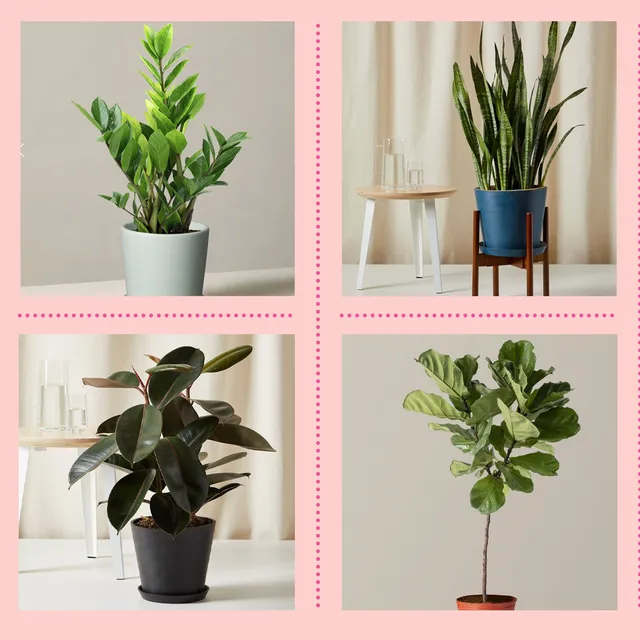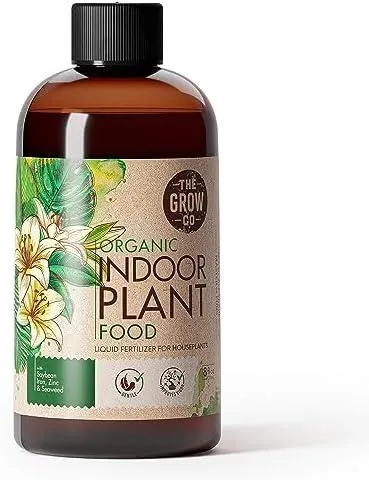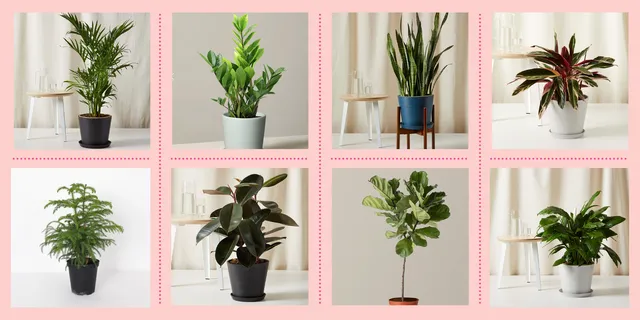The Best Plants for Your Indoor Home
If you’re like many people these days and spend a significant amount of time indoors, adding some green plants can make a big difference in how comfortable your home feels. From my experience decorating living spaces with greenery, indoor plants not only improve aesthetics but also the air quality and overall well-being of occupants. In this article, I’ll explore some of the top options for easy-care plants suitable for various indoor conditions and needs.
Low Light Plants
For areas that don’t receive much natural sunlight, you’ll want plants that can thrive with less light. Pothos and snake plants (Sansevieria trifasciata) are great choices as they are extremely tolerant of low light. Pothos vines will gracefully trail over edges of pots or shelves and come in several varieties with different leaf patterns. Snake plants stand upright and don’t require much water either, making them near-indestructible!
Another excellent choice for low-light areas is the ZZ plant (Zamioculcas zamiifolia). With its thick, glossy green leaves that have an almost artificial look, the ZZ plant can go for weeks without water and is basically indestructible. It loves to be root bound too, so you can keep it in a relatively small pot. Chinese evergreen (Aglaonema) and spider plants (Chlorophytum comosum) also adapt well to low light.
Bright Light Plants
If you have a sunny windowsill or other area receiving plenty of sunlight, you have more options of plants that will thrive. Peace lilies (Spathiphyllum) are beautiful with their broad, tapered leaves and the occasional bloom of white flowers. They indicate when they need water by drooping leaves, so they’re virtually foolproof. Another hardy choice is the Boston fern (Nephrolepis exaltata), with its lush fronds. It grows well in bright, indirect sunlight.
For bright spots, consider popular picks like the Chinese evergreen, devil’s ivy or golden pothos (Epipremnum aureum), and philodendrons. The heartleaf philodendron and Brazil philodendron have lovely leaves in various shapes and sizes. You could also try lower maintenance succulents like echeveria, haworthia, senecio, or kalanchoe for vibrant pops of color in sunny areas.

Plants for Bathrooms
The high humidity found in many bathrooms makes it an ideal environment for certain plats. Top choices include Peace lilies, which thrive on the extra moisture in the air. Another smart option is the spider plant. In addition to tolerating low light, it’s one plant that actively helps improve indoor air quality by emitting oxygen and removing toxins like formaldehyde and benzene.
Other great bathroom plants include the pothos and the philodendron. And if your bathroom gets enough light, try a fern or the ZZ plant. Just be sure any plant you put in the bathroom can handle occasional splashes or drops from the sink. Place them up higher if you have curious kids or pets that may knock them over.
Pet-Friendly Plant Choices
If you have furry friends running around the home, aim for non-toxic plants that pets can’t easily chew or aren’t appealing to them. The ZZ plant, snake plant, pothos, spider plant and Chinese evergreen top the list. Rubber plants, peace lilies, and philodendrons also make good pet-safe picks. Just be sure to place plants up high or behind barriers that pets can’t easily access, because even non-poisonous plants can cause an upset tummy if ingested.
Low-Maintenance Options
When time is scarce, go for plants that don’t demand a lot of fussing. Snake plants and ZZ plants are famously unkillable – they’ll survive long periods without water. Pothos and philodendrons are also pretty tough customers. Chinese evergreens and spider plants can go a few weeks between watering. For super low maintenance, consider succulents or air plants that simply need occasional misting rather than traditional watering. These are ideal if you’re not home much or tend to forget about plants.
Improving Indoor Air Quality
Beyond just adding visual appeal, certain plants are fabulous for actually improving the air quality inside your home. EPA studies show that houseplants are capable of removing toxins like benzene and formaldehyde from indoor air. As previously mentioned, spider plants, peace lilies, and bamboo palm excel at this. English ivy, dracaena, and gerbera daisies also make the cut. Basically, the more plants you can comfortably fit inside your living spaces, the more they’ll work to purify the air for better health.

Dealing with Pests Naturally
No matter how diligent you are, pests like spider mites, aphids and scale can occasionally hitch a ride indoors on new plants. Some natural defenses I’ve used include mixing a few drops of diluted neem or tea tree oil into plant water or spraying leaves of affected plants. The essential oils help deter pests without harming people or pets. You can also try sprinkling diatomaceous earth on top of potting soil as a mechanical pest deterrent.
If you see pests rapidly multiplying, quarantine the infected plant away from others. As a last resort, neem oil or insecticidal soap applied as directed on the label can dispatch stubborn issues. But the best long term strategy is choosing pest-resistant plants to begin with. Most pest problems crop up on finicky, overly stressed plants. Choosing hardy varieties with thicker leaves cuts your pest risk substantially.
How to Care for Indoor Plants
- Water plants when the topsoil feels dry to the touch, usually every 1-2 weeks. Avoid soggy soil which can cause root rot.
- Fertilize monthly in the growing season with a dilute, balanced plant food to keep foliage healthy and colorful.
- Rotate plants occasionally and move to different spots to ensure even exposure to light.
- Dust leaves periodically with a microfiber cloth to remove accumulated dust which hinders photosynthesis.
- Prune off any dead or diseased parts and trim plants as desired to keep them bushy.
- Consider using pebble trays under plant pots to increase humidity around finicky foliage plants.
With some trial and error, you’ll eventually find the right combination of low-maintenance plants suited to the conditions in your home. Soon you’ll be enjoying all the benefits that come from surrounding yourself with living greenery indoors. From reducing stress to raising air quality, there’s no prize like a home full of beautiful plants. Plus caring for them is a form of meditation and a creative outlet. What more could you ask for?
I hope this overview has given you a solid starting point for choosing plants that will thrive inside your indoor spaces. Feel free to experiment after scoping out what grows best in the microclimates in your abode. Most of all, have fun decorating with natural touches that leave you feeling recharged whenever you walk through the door. Let me know if you have any other plant questions!

Top Plants for Indoor Homes
| Plant | Light Needs | Watering Needs | Easy Care |
|---|---|---|---|
| Pothos | Low | Let dry between waterings | Yes |
| Snake plant | Low | Water every 2-4 weeks | Yes |
| English ivy | Medium | Water when top inch of soil is dry | Yes |
| peace lily | Medium | Water when soil is dry | Yes |
| ZZ plant | Low | Let dry between waterings | Yes |
FAQ
-
What type of plants are best for indoor homes?
Basically, there’s a lot of plants that do real well inside. Plants like pothos, spider plants, peace lilies and English ivy are practically unkillable and will pretty much grow anywhere. Snake plants and zz plants are also kinda tough and don’t need a ton of light or water.
-
How much sunlight do indoor plants need?
The amount of sunlight indoor plants need varies, but most prefer some light. Plants close to a sunny window will want brighter light for several hours a day. Meanwhile, plants farther inside will basically survive on lower indirect light. A few hearty plants can tolerate very low light, but appear to thrive best with at least some brightness.
-
What is the best growing medium for potted indoor plants?
While many plant parents use regular potting soil, you may find better results choosing a soil made for indoor plants. These soils tend to hold moisture without getting soggy and wet feet. Potting mixes like cactus soil or orchid bark mixes drain well and prevent root rot, which do seem to help indoor plants, from what I’ve read.
-
How often should indoor plants be watered?
The frequency of watering changes with the plant type and growing conditions. Nevertheless, it’s always best not to follow a set schedule and instead check if the soil is dry about an inch down before watering. Contrary to assumptions, overwatering appears to be more common and damaging for indoor plants than underwatering. So when in doubt, hold back on the watering can!
-
What are some low maintenance indoor plants?
Some plants needing very little care sound like the snake plant, pothos, philodendron, zz plant and peace lily. These beauties can go quite a while without water and dusting. On the other hand, plants with delicate leaves or constant bloom may cause hassle and require attention. So ask yourself how much free time you got before choosing an indoor friend!

-
How can I get my plant to flower indoors?
To be honest, indoor plant flowering can feel like chasing rainbows sometimes. However, apparently giving plants lots of humidity, bright filtered sunshine and keeping them slightly pot bound helps trigger blooms. Maybe try talking nicely to your plant too – might work if you’re lucky! Or could just be seeing things…hmm.
-
What are some signs that an indoor plant needs help?
Keep an eye out for telltale signs such as wilted, yellow or brown foliage. Such issues could mean the plant needs water, food, or is suffering from pests or disease. Drooping stems or stunted growth might another strong hint something’s wrong. But appearance can fool, so ask an expert if you’re stumped! Our plant friends just want some TLC to stay healthy.
-
Why are indoor plants good to have?
Besides making a home visually stunning, studies show plants may help purify indoor air and reduce stress. Some research even finds green companions can lift moods and aid productivity. Who knew that just a pot or two could offer health perks? Yet perhaps the biggest advantage might be losing yourself in tending foliage fills idle moments and brings a smile.
